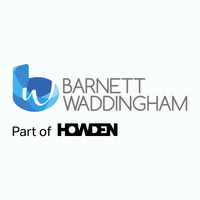Delivering a communications strategy that engages and educates
Creating communications that motivate and recognise your employees starts with a well designed strategy centred on knowing them.
Your engagement strategy should involve analysing what is and isn’t currently working so you can understand the issues affecting your organisation and deliver your message through the right channels to ensure maximum impact.
It should also involve checking how you’re performing against your objectives and making adjustments along the way, so you stay on track to reaching your engagement goals.
Your communications will need to be designed in a way that’s fully accessible and inclusive to most people, not a selected few.
1. Analysis
The importance of understanding your audience can’t be underestimated.
Begin by collecting data to help with that understanding – this could be through surveys, focus groups as well as any data and knowledge you already have.
Explore the challenges facing your workers, what communications are in place and how well they’re landing. And if something hasn’t worked previously, look at why that might be.
Draw insights from the data and identify key points to work out what the priorities are for your communications – this could be focusing on a subject such as investment, for example, if the survey highlighted a lack of understanding across the membership.
Understanding which channels your audience prefer to receive their information through is an important element to your planning.
This may take time to build a full picture, but the more information you gather the better you can tailor your communications to meet the needs of your audience.
2. Consultancy
Once you understand your audience, a clearer picture can be created of where value can be added through your communications.
Setting out a timeline across 12-18 months can help maximise engagement and response levels and identifying any pinch points that might occur.
Careful planning can avoid clashes with other scheme or company campaigns – it can even help leverage specific times in the company calendar.
The data analysis might point to segmenting your communications and targeting certain cohorts - for example, by age, type of role or position within the company.
New recruits are likely to need educating about the type of pension scheme they’re in and the focus for your younger members might be to just stay in, for example.
Older members will have different goals and attitudes to their pension savings, so will need more information around how they access their benefits in retirement.
Maybe the channels you’re currently using aren’t quite working, so opting for an alternative such as face-to-face or introducing an entirely new channel might be an option.
Every communication should have a specific and measurable objective. This would normally be a call to action – asking people to return an expression of wish form, update their address or register for an online portal.
3. Delivery
Once you have a plan, you’re ready to deliver the right message, in the right way, at the right time for maximum impact and return on your investment.
While the channels used are one key aspect for reaching your people, the content and design of the communications being delivered are just as important.
And whether it’s to meet regulatory requirements or just to follow best practice, make sure your communications are accessible and inclusive to most people – simple, easy to understand and informative language through to best practice and innovative design.
4. Check
The final stage, and one often overlooked, in this four-pillar approach is checking to make sure everything put in place resonates with your audience and produces the responses and outcomes you want to achieve.
This should be an ongoing process, rather than just a one-off exercise.
Monitoring and evaluating how the communications, campaigns and broader strategy are performing against the objectives is paramount.
This all feeds into an evolving, flexible strategy that can be adjusted as needed.
To maximise your impact and return on investment it’s important to understand your audience and what they need so you can provide meaningful and engaging communications.
Supplied by REBA Associate Member, Barnett Waddingham
Barnett Waddingham is proud to be a leading independent UK professional services consultancy at the forefront of risk, pensions, investment, and insurance. We work to deliver on our promise to ensure the highest levels of trust, integrity and quality through our purpose and behaviours.








